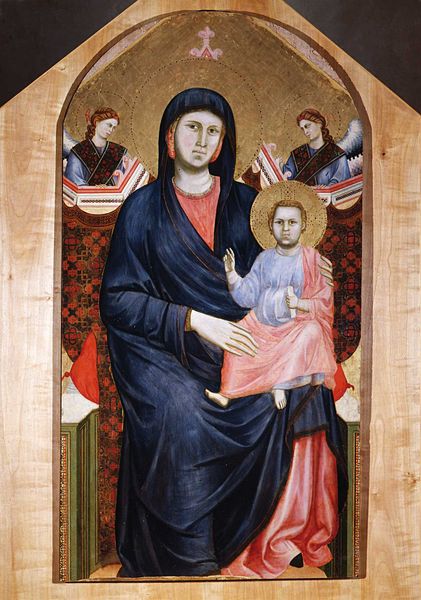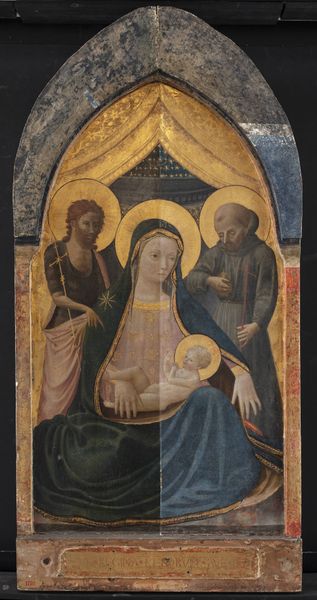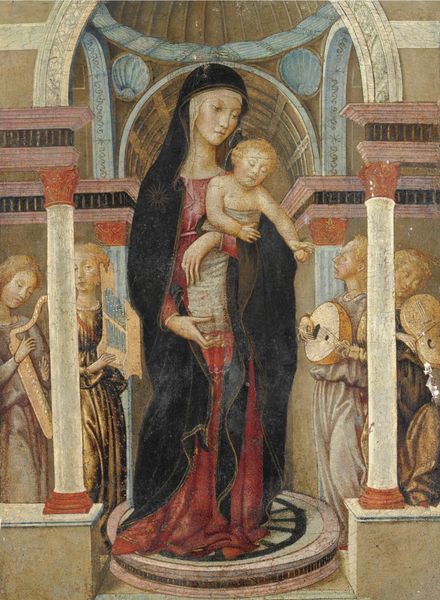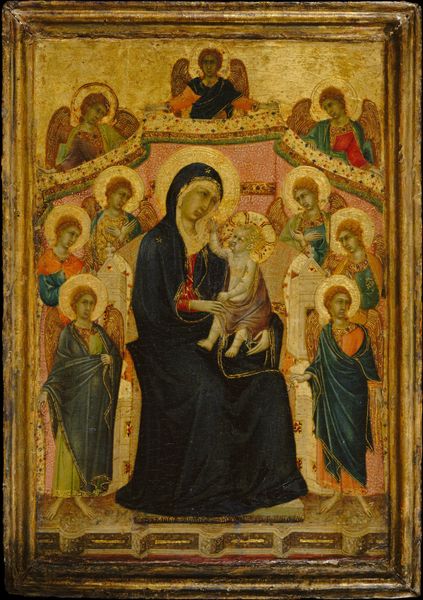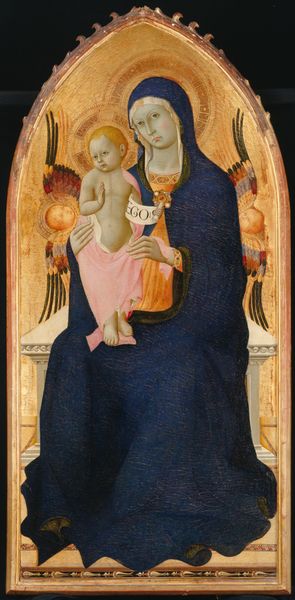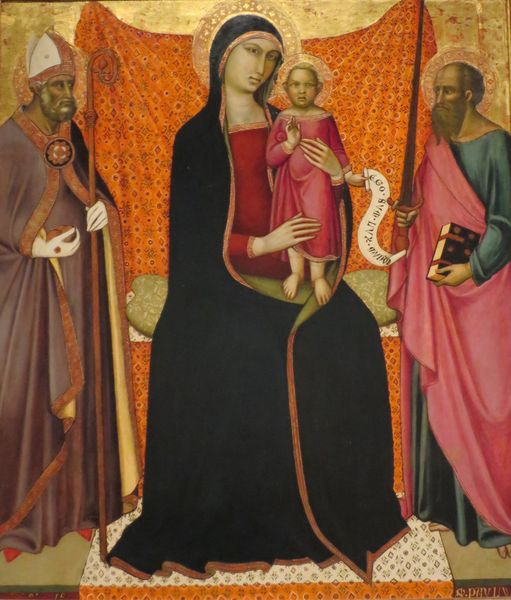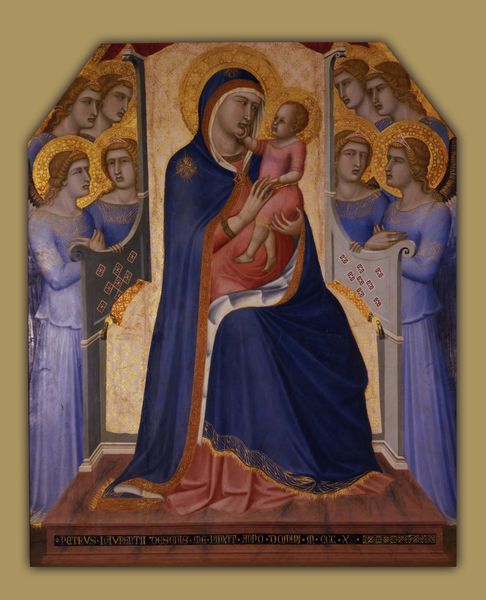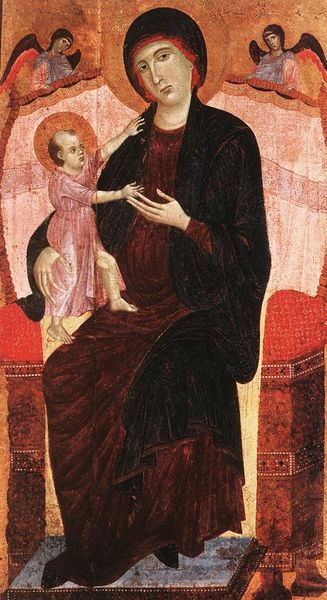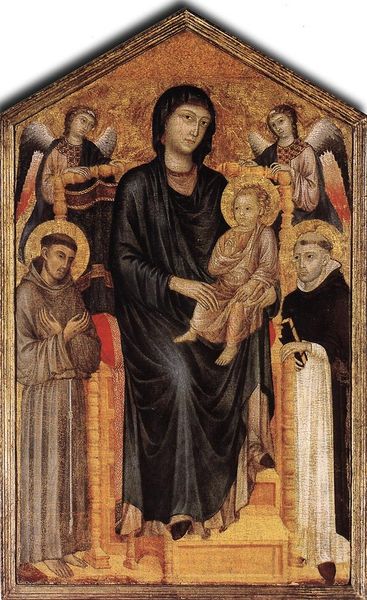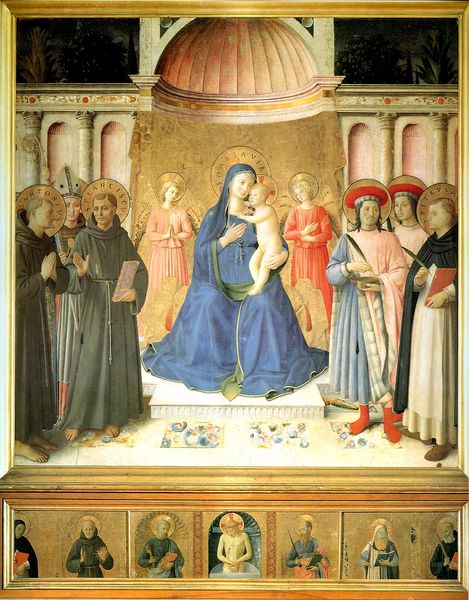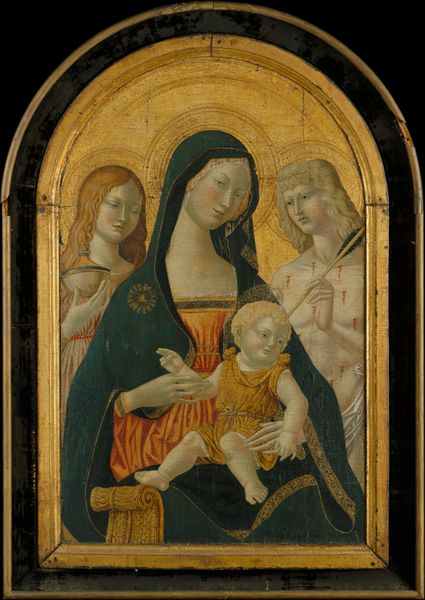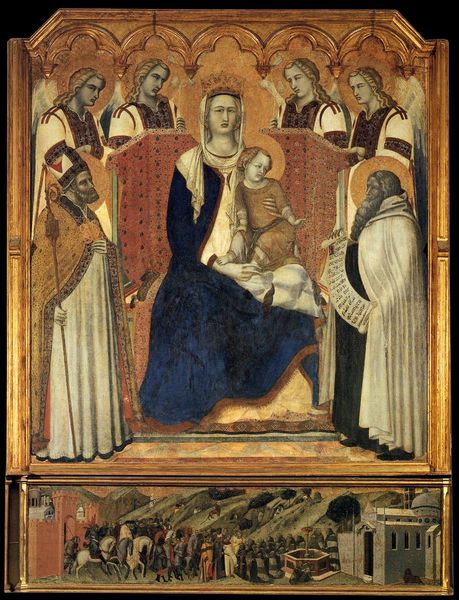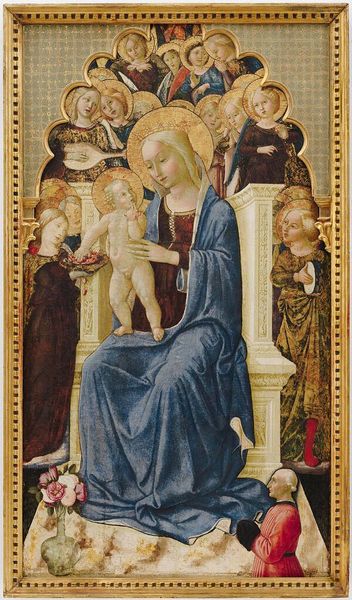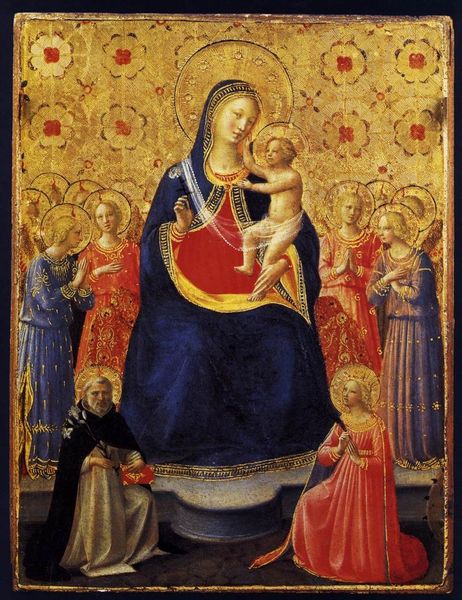
tempera, painting
#
portrait
#
medieval
#
allegory
#
narrative-art
#
tempera
#
painting
#
sienese-school
#
figuration
#
history-painting
#
italian-renaissance
Copyright: Public domain
Editor: This is Pietro Lorenzetti’s “Madonna Enthroned with Angels,” a tempera painting from 1340. There’s a serenity to it, a quiet dignity in Mary's face. The angels seem so somber, too. What do you see in this piece, especially considering its historical context? Curator: Beyond the obvious religious iconography, I see a painting steeped in the politics of its time. Lorenzetti, situated in Siena, a republic in constant conflict with Florence, crafted an image not just of piety but of civic identity. The Madonna, in this reading, isn't merely a mother, but a symbol of Siena itself—a protector, a source of strength. Consider the gaze of the angels. Do you see subservience or critical awareness? Editor: Critical awareness? That's interesting. I mainly saw them as reverent, perhaps a bit detached. Curator: Think about the role of women, even idealized, within the medieval and early Renaissance power structures. Are they active participants, or passive symbols appropriated by male narratives? Does the painting reinforce or challenge those patriarchal dynamics? Look at how the Madonna is physically positioned. Is she truly enthroned or subtly contained? Editor: I see what you mean. The architecture around her is almost cage-like. I hadn't considered how her role as a symbol could overshadow her humanity or even be a kind of confinement. So, by examining the historical context and questioning the portrayal, we can see a completely different narrative emerging? Curator: Precisely. It’s about disrupting the assumed narratives, asking whose stories are being told and at whose expense. Art history should challenge, not just confirm. Editor: This makes me look at this painting in a new light; what was once a symbol of piety and devotion now reveals the intricate dance between power, identity, and representation in a particular place and time. Curator: Indeed, now consider these questions with other art works; the potential is transformative.
Comments
No comments
Be the first to comment and join the conversation on the ultimate creative platform.
